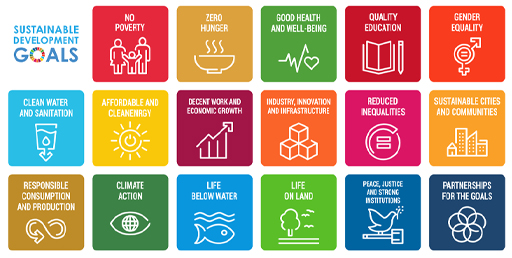1.2 Politics
The politics of a country can have a powerful influence on children’s mental health. For example, children who live in low-income countries are less likely to have access to health services and an education beyond secondary school. The United Nations (UN) Sustainable Development Goals aim to improve the lives of all people in low-income countries and to ‘address the global challenges we face, including those related to poverty, inequality, climate, environmental degradation, prosperity, and peace and justice’ (UN, 2019).
There are 17 goals, which often overlap and interrelate.
Goal 3 is related to good health and wellbeing. While there is no specific emphasis on children’s mental health and wellbeing, improving health and reducing threats to health will, in turn, reduce the number of children who are orphaned (a major threat to a child’s wellbeing), improving their mental health and wellbeing.

